Hairline Lowering Surgery in Seoul
Search and Compare the Best Clinics and Doctors at the Lowest Prices for Hairline Lowering Surgery in Seoul
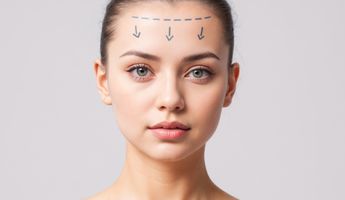
Find the best clinics for Hairline Lowering Surgery in Seoul
With Medijump you can browse 3 facilities offering Hairline Lowering Surgery procedures in Seoul. The cheapest price available is $5,243 in Seoul. And for the cheapest price globally, prices start from $500 in Egypt.
Hairline Lowering Surgery in South Korea
Price: $ 5,243
Hairline Lowering Surgery in Seoul
Price: $ 5,243
Egypt offers the best prices Worldwide
Price: $ 500
From 4 verified reviews
귀요미, 27 October 2019
It is a well known hospital. Underground food court restaurants are also delicious. It's always a busy place to go.
From 8 verified reviews
Lucy Thornton, 31 August 2020
I would highly recommend Nana Plastic Surgery Clinic. I had a full mommy makeover and Dr Hwang did a great job! The language barrier was never a problem thanks to the amazing English consultant Kylie. She has put in hours helping me …
From 98 verified reviews
cc a, 04 July 2020
Heart here6 months passed, very pleasant to the touch and shapeIsn't it famous for my heart?There is also a person who is in charge of post-management care alone.It is recommended if there is a person around the kindness
- Home
- South Korea
- Seoul
Compare Before & After Photos of _procedure_photos.phpHairline Lowering Surgery
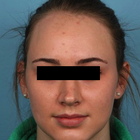
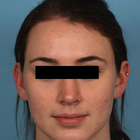
Front view
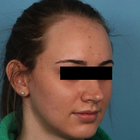
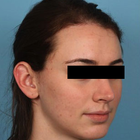
Half-side view

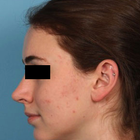
Full-side view

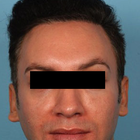
Front view
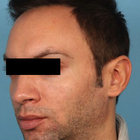
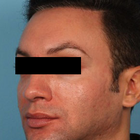
Half-side view


Full-side view
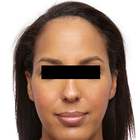

Front view
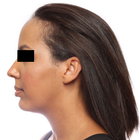

Full-side view
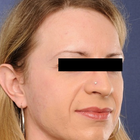
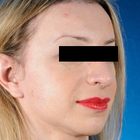
Half-side view
WHY US?
At Medijump, we're making medical easy. You can search, compare, discuss, and book your medical all in one place. We open the door to the best medical providers worldwide, saving you time and energy along the way, and it's all for FREE, no hidden fees, and no price markups guaranteed. So what are you waiting for?

Free

Best Price

Widest Selection

Risk-Free
What you need to know about Hairline Lowering Surgery in Seoul
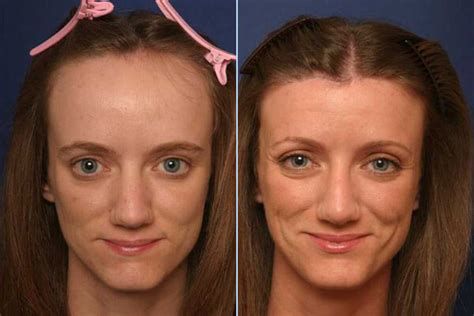
Also known as Forehead Reduction, Forehead Contouring or Scalp Advancement, Hairline Lowering Surgery allows patients to lower their frontal hairline, often lowering it by up to 2 inches. This procedure aims to reduce the distance between the hairline and the eyebrows, creating a more proportionate appearance. It is most commonly done on women with high hairlines, often the result of hair loss.
The procedure usually takes a couple of hours and is performed under general anesthetic. The new hairline is marked on the forehead, the surgeon will cut away this excess skin and the scalp is lowered to the new hairline. Incisions are strategically placed to minimize the visibility of the scar, making it virtually undetectable as it's covered by hair. It's common to combine hair lowering surgery with Facial Feminization Surgery (FFS). Contact a reputable clinic to ensure the best possible results.
What is the cost of Hairline Lowering Surgery in Seoul?
Before choosing a procedure, it is essential to understand the cost of a Hairline Lowering Surgery in Seoul. The cost might vary depending on a number of factors, including the complexity of the procedure, the surgeon's experience and reputation, and the facility. This approximate cost mostly covers the surgeon's fees, anaesthesia, required medical exams, and hospital or operation centre expenses. This is only a broad estimate, so when accounting for other charges, the exact prices might be higher. The ultimate cost may increase as a result of some factors, including consultation fees, outlays for post-operative care such medications, bandages, and follow-up consultations, as well as potential further surgeries to control complications or enhance outcomes.
It's important to keep in mind that Hairline Lowering Surgery is frequently regarded as a cosmetic surgery and may not be covered by conventional health insurance plans. It is best for the patient to speak with their insurance company before the procedure to understand the specific out-of-pocket costs they would have to pay. Some cosmetic surgery practises may provide financing options or payment plans to help patients manage the cost of the procedure.
What does a Hairline Lowering Surgery Procedure Involve?
Hairline lowering suregry is performed under local or general anesthesia. Before the operation begins, the surgeon draws an anticipated post-operative hairline. The surgery is performed according to this and an incision is made along the hairline. The excessive scalp is cut and removed and the rest is stretched to the new hairline. If this is not enough, tissue expanders are used to make it to the new hairline level. Sutures are used to fix the scalp to the bone and incisions are stitched with bandages being applied over the top.
The medical professional ensures that the incision marks are seamlessly concealed within the hairline, thereby reducing any visible traces of the procedure. Once the operation is concluded, the cut is stitched, and a gentle dressing is applied to shield the wound and diminish inflammation. It's important to understand that the intervention may lead to temporary loss of sensation or minor prickling around the area of incision, however, these symptoms tend to dissipate within several months.
How Long Should I Stay in Seoul for a Hairline Lowering Surgery Procedure?
Hairline lowering surgery is an outpatient procedure that takes around 1.5 to 2 hours to complete. After the effects of the sedation subside, you are allowed to leave. Still, you should aim to stay in Seoul for at least 6 days post-op. During this period, you will have a follow-up with the surgeon to check everything is healing as expected and the sutures are removed, usually after 5 to 6 days - this is when you're given the all-clear to travel home.
What's the Recovery Time for Hairline Lowering Surgery Procedures in Seoul?
It will take between 3 to 6 months to allow the regrowth of hair through the scar, which is important as it hides the scar. Recovery time varies from person to person and some people can get back to their normal routine even after 3 days. At least a week is usually required to get back to normal activities and you may find some swelling and bruising over your forehead in the early days. Pain is managed with painkillers and all symptoms subside after a couple of days. A numbing of the forehead is common and normal feeling usually returns after 3 to 5 days.
What sort of Aftercare is Required for Hairline Lowering Surgery Procedures in Seoul?
Aftercare following a Hairline Lowering Surgery is crucial to ensure a smooth recovery and minimization of potential complications. The following are some useful aftercare tips:
- Use icepacks in the initial days to help with inflammation and bruising. Ice is effective in reducing swelling immediately.
- Do not take anti-inflammatory medicines as they increase bleeding tendency.
- Continue taking painkillers prescribed by your doctor.
- Try not to look upwards and avoid frowning as this can be damaging to your stitches.
- Do not lift heavy objects.
- Keep your head a little higher whilst resting.
- Ensure that tight bandages have been applied over the wounds and replace regularly with fresh ones.
- Do not take a bath when the bandages are still intact as a wet bandage can be the cause of infection.
- Avoid strenuous activities such as the gym, running, swimming, etc. for at least 2 weeks after the surgery.
- Do not put hair bands or any other accessory on your head for some time.
- Do not drink or smoke as it will hinder the healing process.
- Ensure you have a diet rich in vitamin C as it makes the healing process faster.
What's the Success Rate of Hairline Lowering Surgery Procedures?
A Hairline Lowering Surgery frequently yields remarkable results, with a significant number of individuals expressing contentment with their post-procedure appearance. Nevertheless, outcomes may differ based on the medical institution or medical professional involved. With the possibility of the scar being visible with certain hairstyles, Hair Transplantation could be applied to further reduce the appearance of any scarring.
Notably, while Hairline Lowering Surgery tends to yield positive results for the majority, it might vary on an individual basis. Factors such as your unique hair growth pattern, scalp flexibility, and the overall state of your hair condition could all influence your final outcome. Therefore, maintaining ongoing communication with your medical professional and adhering to their recommendations both pre and post-treatment is crucial to optimising your results.
Are there Alternatives to Hairline Lowering Surgery Procedures in Seoul?
Surgery is not the only option. Consider these methods before opting for surgical treatment:
- Grafting hair (Hair Transplant): with this technique more hairs are grafted along your hairline instead of lowering it. This is also used for the thickening of your hair. A new layer of hair is grafted below your natural hairline. 1200 to 2400 hair strands are grafted. These hairs fall out after 3 weeks then regrow in 4 months. 10 months is required before you'll see the true longterm result. This is a non-surgical alternative to hairline lowering surgery and it is found to be very effective in reducing the size of your forehead.
- Hairstyling: You can hide a big forehead by styling your hair in such a manner. Of course, this is a non-surgical method. Choose those hairstyles which cover your forehead the most. Some people will use headscarves and hats to also hide their forehead.
What Should You Expect Before and After the Procedure?
A fundamental phase before proceeding with a Hairline Lowering Surgery in Seoul is the preliminary discussion with your medical expert. This interaction involves a comprehensive health evaluation, scrutiny of your medical background, and discussion of any medications you currently use by your expert. They will also perform an exhaustive examination of your scalp and hairline. This evaluation offers the medical professional an opportunity to decide if you're the perfect fit for the process. Moreover, they will deliberate on your anticipation and cosmetic objectives, ensuring they align with the realistic outcomes offered by Hairline Lowering Surgery.
Feeling slight discomfort, swelling, and bruising in the treated part is a normal sensation post a Hairline Lowering Surgery. It is vital to abide by the directives of your medical professional, which may involve keeping your cranium elevated and avoiding rigorous activities to manage these symptoms. For the initial few days succeeding the procedure, rest is essential, providing your body with time to recuperate. Your medical expert might recommend pain-relief therapy for discomfort management. Usually, stitches are taken out approximately one week after the surgery, and by this time, most people can get back to their work and routine activities. Regular follow-up sessions with your medical expert should be expected during the recovery span. These sessions offer your expert a chance to track your recovery progress, manage any prospective obstacles, and provide support during your healing period.
What are the Risks and Side Effects of Hairline Lowering Surgery in Seoul?
While side effects are usually minimal, they are important to think about. After the Hairline Lowering Surgery, you might feel some short-term side effects like swelling, pain, and bruising around the spot where you had the surgery. This is normal during healing and usually goes away in a few days. Numbness or tingling near the cut is also common after a Hairline Lowering Surgery. This happens because small nerves can be affected during the procedure. As your body recovers, these feelings should slowly lessen and finally go away.
Some people might notice hair loss, usually temporary, around the cut. This happens due to the stress on the hair roots during the procedure. However, this kind of hair loss usually doesn't last more than a few months, and new hair will start to grow. More serious risks include infection, heavy bleeding, or bad reactions to the anesthesia. While these problems are rare, they need immediate medical help. To reduce these risks, it's crucial to pick a good surgeon and follow their before and after care instructions.
Whilst the information presented here has been accurately sourced and verified by a medical professional for its accuracy, it is still advised to consult with your doctor before pursuing a medical treatment at one of the listed medical providers
No Time?
Tell us what you're looking for and we'll reachout to the top clinics all at once
Enquire Now

Popular Procedures in Seoul
Prices Start From $136

Prices Start From $4

Prices Start From $126

Recommended Medical Centers in Seoul for Hairline Lowering Surgery

- Interpreter services
- Translation service
- Religious facilities
- Medical records transfer
- Medical travel insurance
- Health insurance coordination
- TV in the room
- Safe in the room
- Phone in the room
- Private rooms for patients available

- Interpreter services
- Translation service
- Religious facilities
- Medical records transfer
- Medical travel insurance
- Health insurance coordination
- TV in the room
- Safe in the room
- Phone in the room
- Private rooms for patients available

- Interpreter services
- Translation service
- Religious facilities
- Medical records transfer
- Medical travel insurance
- Health insurance coordination
- TV in the room
- Safe in the room
- Phone in the room
- Private rooms for patients available

- Interpreter services
- Translation service
- Religious facilities
- Medical records transfer
- Medical travel insurance
- Health insurance coordination
- TV in the room
- Safe in the room
- Phone in the room
- Private rooms for patients available

- Interpreter services
- Translation service
- Religious facilities
- Medical records transfer
- Medical travel insurance
- Health insurance coordination
- TV in the room
- Safe in the room
- Phone in the room
- Private rooms for patients available

- Interpreter services
- Translation service
- Religious facilities
- Medical records transfer
- Medical travel insurance
- Health insurance coordination
- TV in the room
- Safe in the room
- Phone in the room
- Private rooms for patients available

- Interpreter services
- Translation service
- Religious facilities
- Medical records transfer
- Medical travel insurance
- Health insurance coordination
- TV in the room
- Safe in the room
- Phone in the room
- Private rooms for patients available

- Interpreter services
- Translation service
- Religious facilities
- Medical records transfer
- Medical travel insurance
- Health insurance coordination
- TV in the room
- Safe in the room
- Phone in the room
- Private rooms for patients available

- Interpreter services
- Translation service
- Religious facilities
- Medical records transfer
- Medical travel insurance
- Health insurance coordination
- TV in the room
- Safe in the room
- Phone in the room
- Private rooms for patients available

- Interpreter services
- Translation service
- Religious facilities
- Medical records transfer
- Medical travel insurance
- Health insurance coordination
- TV in the room
- Safe in the room
- Phone in the room
- Private rooms for patients available
Hairline Lowering Surgery in and around Seoul
About Seoul
Seoul is the capital city of South Korea and is one of the most affluent cities in Asia with high per capita income. Seoul is a city of differences as you can find anything from ancient monuments and palaces to modern skyscrapers. Every year the city attracts over 10 million tourists from different parts of the world. While some visit Seoul to enjoy its rich culture, others come to experience the fascinating metropolitan vibe, large numbers of medical tourists visit this busy city to undergo various medical procedures for cheaper prices and to enjoy the Korean hospitality. As per reports from the South Korean Ministry of Health & Welfare, the number of medical tourists in 2016 increased to 364,000, which is 23% more than in 2015. Some of the more popular procedures sought-after in Seoul are gynecology related treatments, stem cell therapy, treatments in neurology & endocrinology, laser treatments, transplants, and cardiology.
According to the Ministry of Health and Welfare, most medical tourists are from China, Uzbekistan, UAE, Japan, and Canada. Seoul is dynamically emerging as one of the most preferred destinations for medical tourism. The city proudly houses one JCI accredited hospital. The other top-rated medical hospitals include the Severance Hospital, Asan Medical Center, Seoul National University Hospital, MizMedi Women's Hospital. The world-class hospitals comprise of VIP rooms, exceptional medical facilities, and highly-reputed physicians. Doctors are fluent in English, Korean, Japanese, and French.
Popular Areas in Seoul
The beautiful River Han flows through the heart of the city. It divides Seoul into North and South and you will find most of the ancient palaces and historical sites in the North. The Southside is quite modern and trendy with neighborhoods like Gangnam which is also the business hub of the city. It is also the residential part of the city with many apartments, and shopping malls.
- River Han: Is the favorite location for both locals and tourists. Here, you can enjoy indulging in exciting water activities such as windsurfing, water skiing, fishing, sailing, and swimming. The banks of the river are the perfect place to lounge and see the lights of the city at night.
- Banpo Bridge: Connects the districts Seocho and Yongsan and It was the first double-deck bridge built in South Korea and is covered with 10000 lights and the Rainbow Fountain's colored water rains down the side of the bridge.
- Gangnam: It is the most trendy neighborhood and is home to Asia's largest shopping mall, COEX, and several high-end restaurants.
- Hongdae: Four Korean Universities lie close to the neighborhood. Hongdae houses a number of theme-based restaurants and an array of boutiques that cater to the needs of college-goers. Several music venues and glitzy nightclubs make it a perfect place to enjoy the vibrant nightlife.
- Myeongdong: Is the best and the largest shopping destination in Korea. It is a shopping mega where you can find clothes, cosmetics, stylish handbags, shoes and accessories, and Jewelry at affordable prices.
Weather and Climate in Seoul
As Seoul lies close to the coast of the Yellow Sea, the climate is continental. Summer and Winter are the two distinct seasons in Seoul. Summer is sultry, hot, and rainy, whereas winter is cold and sunny. The transitional periods are the spring and autumn, which are mild and pleasant.
- Winter: November to February. The average temperature is around 0°C during winter. The cold air blows in from Asia and during the night time, the temperature can drop to -20°C but it rarely snows during winter.
- Spring: March to May. Spring is mild and it rains occasionally.
- Summer: June to August. Seoul receives about 80 mm of rainfall during the summer season. July is the wettest month of the year. The temperature can rise to 35°C during the hot summer days.
- Autumn: September-October. Autumn is pleasant and rainfall gradually decreases during these months.
Getting around in Seoul
Incheon International Airport lies 48 km west of Seoul. It is the largest in the country and one of the busiest airports in the world. The airport is luxurious with an ice-skating rink, casinos, and spas. The airport operates several domestic and international flights to varied parts of the world.
Seoul has one of the finest public transportation systems in the world.
- Seoul Metropolitan subway: It is the fastest and cheapest mode of transportation. There is a total of 22 lines in operation and it costs 0.44$ for a single journey. You can buy tickets at the vending machines found in all subway stations.
- Seoul public buses: There are four different types of buses running in Seoul, each one covering different routes. The cost varies from 0.92$ to $1.63, depending on the bus type and the distance traveled.
- Taxis: Are expensive and are ideal for a large group of people. Regular, deluxe, jumbo, and International taxis are available. The major differences being the size and fare.
Tourist visa in Seoul
South Korea exempts the citizens of 117 countries from obtaining a valid tourist visa to enter the country. Australia, Chile, Greece, Germany, Hungary, Italy, Mexico, Russia, Switzerland, UK, US are some of the visa-exempted countries. They can stay visa-free for a maximum of 90 days.
Citizens of countries like India, China needs to apply for a tourist visa with all the required documents. The visa fee comes to around $30.
Additional Information
- The official currency of South Korea is the Korean Republican Won (KRW). One US dollar is approximately equivalent to 1149 KRW.
- You can find ATMs across the City. Some accept foreign cards and dispense cash. You can exchange your currencies to KRW in banks and money exchange booths.
- Hangul is the national and official language of South Korea. Koreans who are under the age of 40 years understand and speak English better than the rest of the locals.
- Most people in Korea are not affiliated with any religion. The same holds true in Seoul. Though, a small number of people practice Confucianism and Buddhism.
- Some of the public holidays in Seoul include New Year's Eve, Korean New Year, Buddha's birthday, Constitution day, Harvest festival, Hangeul day and Christmas.
Popular Searches
- Plastic Surgery in Thailand
- Dental Implants in Thailand
- Hair Transplant in Thailand
- Breast Augmentation Thailand
- Gastric Sleeve in Thailand
- Gender Reassignment Surgery in Thailand
- Laser Hair Removal in Bangkok
- Botox in Bangkok
- Dermatology in Bangkok
- Breast Augmentation in Bangkok
- Coolsculpting in Bangkok
- Veneers in Turkey
- Hair Transplant in Turkey
- Rhinoplasty in Turkey
- Stem Cell Therapy in Mexico
- Rhinoplasty in Mexico
- Liposuction in Mexico
- Coolsculpting in Tijuana
- Rhinoplasty in Korea
- Scar Removal in Korea
- Gastric Sleeve in Turkey
- Bone Marrow Transplant in India
- Invisalign in Malaysia
- Plastic Surgery in the Dominican Republic
- Tummy Tuck in the Dominican Republic
- Plastic and Cosmetic Surgery in Poland
- Rhinoplasty in Poland
- Hair Implant in Poland
- Dental Implants in Poland
- IVF in Turkey


